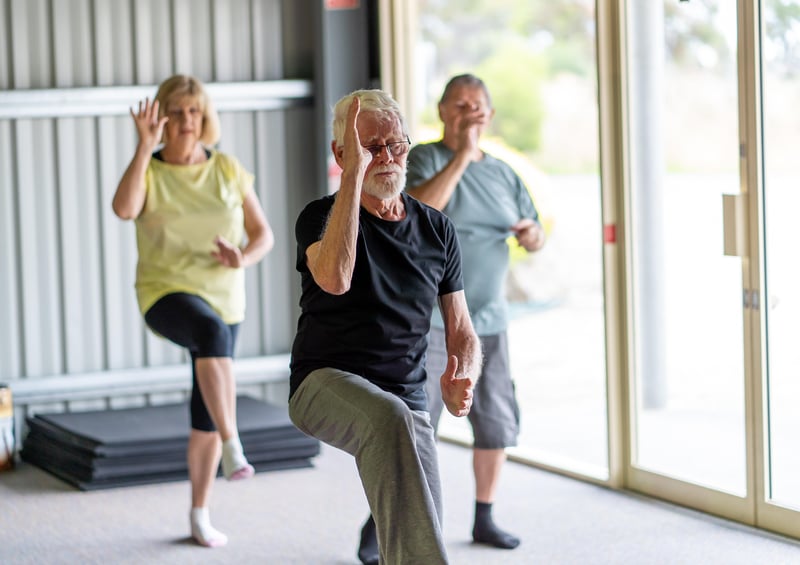Manténgase sano!

- Cara Murez
- Posted June 22, 2022
Can You Stand on One Leg for 10 Seconds? You Might Live Longer
It sounds easy, but standing on one leg for 10 seconds can be harder than you think.
And your ability to do so - or not - may predict whether you are more likely to die within the next decade, a new study suggests. That's why an international team of researchers says the 10-second test should be part of routine health checks for all middle-aged and older adults.
"[It] provides rapid and objective feedback for the patient and health professionals regarding static balance," the researchers said, adding that the test adds useful information regarding a patient's risk of premature death.
Dr. Claudio Araujo of the Exercise Medicine Clinic in Rio de Janeiro led the study.
Araujo's team noted that balance, unlike aerobic fitness, muscle strength and flexibility, tends to be reasonably well preserved until a person's sixth decade of life. It then wanes rapidly.
For the study, the researchers used data from the CLINIMEX Exercise study, which was set up in 1994 to assess links between ill health, death and various measures of physical fitness, exercise and conventional heart disease risks.
The investigators collected data at check-ups from about 1,700 white Brazilians (aged 51 to 75) between February 2009 and December 2020. The check-ups included weight, several measures of skinfold thickness, waist size and medical history. Only people who had a stable gait were included.
Each was asked to stand on one leg for 10 seconds without any added support. They were directed to place the front of the free foot on the back of the opposite lower leg, while keeping their arms by their sides and their gaze fixed straight ahead. They had up to three tries on either foot.
About one in five couldn't do it. Failure was more likely with age, roughly doubling at five-year intervals from age 51 onward.
About 54% of 71- to 75-year-olds could not complete the test, according to the report published June 22 in the British Journal of Sports Medicine.
That was also true for 37% of 66- to 70-year-olds; 18% of those aged 61 to 65; 8% of 56- to 60-year-olds; and 5% of the 51- to 55-year-old age group.
That means those in the oldest group were 11 times more likely to fail than those who were 20 years younger, the study authors noted in a journal news release.
There were no clear differences in causes of death between those who could and those who could not complete the test. But the proportion of deaths among those who failed was almost 13% higher.
Those who failed were more likely to have poor health, including obesity, heart disease, high blood pressure, unhealthy blood fat profiles and type 2 diabetes, the study found.
When the researchers took into account for age, sex and underlying conditions, they linked an inability to stand unsupported on one leg for 10 seconds with an 84% higher risk of death from any cause within the next decade.
Over an average seven-year follow up, 7% of participants died - 32% from cancer; 30% from heart disease; 9% from respiratory disease; and 7% from complications of COVID-19.
As an observational study, the research doesn't prove cause and effect. But the researchers said this simple and safe balance test could be included in routine health checks for older adults.
More information
The BBC's Science Focus Magazine has a self-test to check your balance.
SOURCE: British Journal of Sports Medicine, news release, June 21, 2022







